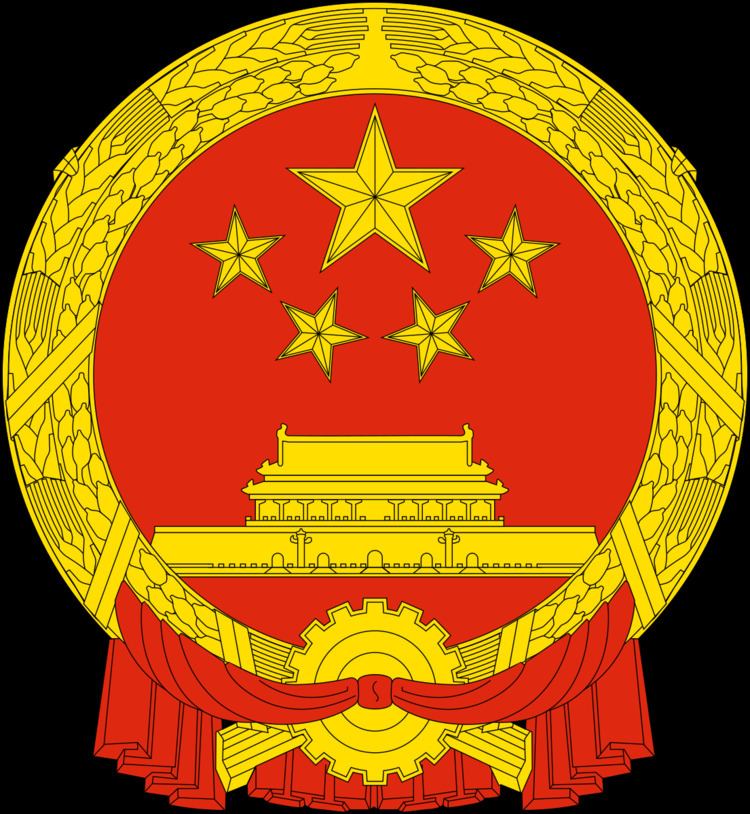Residence Zhongnanhai (informal) | Seat Beijing | |
 | ||
Type largely ceremonial office Nominator the Presidium of the National People's Congress Appointer National People's Congress Term length five years, renewable once consecutively | ||
The Vice President of the People's Republic of China (simplified Chinese: 中华人民共和国副主席; traditional Chinese: 中華人民共和國副主席; pinyin: Zhōnghuá Rénmín Gònghéguó Fùzhǔxí), formerly translated as Vice Chairman of the People's Republic of China from 1954 to 1975, or abbreviated Guójiā Fùzhǔxí 国家副主席, literally State Vice-chairman) is a senior ceremonial position in the government of the People's Republic of China.
Contents
Selection and Powers
The office was created by the 1982 constitution. Formally, the Vice President is elected by the National People's Congress in accordance with Article 62 of the Constitution. In practice, this election falls into the category of single-candidate' elections. The candidate is recommended by the Presidium of the National People's Congress, which also theoretically has the power to recall the Vice President.
By law, the Vice President must be a Chinese citizen of 45 years of age or older. He or she cannot serve for over two terms, a term being the equivalent of one session of the NPC, which is five years.
The Vice President's duties include assisting the President, and replacing him should he resign or die in office. In reality the position of the Vice-President is mostly ceremonial; Vice Presidents Zeng Qinghong, Hu Jintao, and Xi Jinping have been members of the CPC Politburo Standing Committee and the Central Secretariat, the country's main decision making bodies; these three served concurrently as the first-ranked Secretary of the Secretariat, in charge of party affairs.
The Vice-President may play a major role in foreign affairs. For instance, the Vice-President generally sits on the Foreign Affairs Leading Group, a policy coordination body of the Communist Party. The Vice-President has also typically sits on the Central Coordination Group for Hong Kong and Macau Affairs. Therefore, while the Vice-President may not actually have substantive powers as defined in the Constitution, the office nonetheless carries significance and prestige. The holders of the office have all been individuals with a degree of political clout.
Currently, Vice-President Li Yuanchao is the member of the Politburo of the Communist Party of China, but not the Standing Committee.
List of vice presidents
First Administration Second Administration Third Administration Hu–Wen Administration Xi–Li Administration
Central People's Government (1949–1954)
Vice Chairmen of the Central People's Government
The 1st Constitution (1954–1975)
Vice Chairmen of the People's Republic China
The 4th Constitution (1982–present)
Vice President of the People's Republic China
